
Lyon is the second biggest city in France after its Paris but is often recognized as a more significant gastronomical capital of the country. Blessed with its closed proximity to the Rhone Valley and Burgundy (Bourgogne), it’s the synergy with the wine producing regions defines it as the culinary capital of France. The wines are also part of many famous classical French recipes like Beef Bourgogne, Coq Au Vin, and Pears in Red Wine Compote. Other signature dishes from this region include Escargot Bourgones, Salad Lyonnaise and Potatoes Au Lyonnaise.
 As the culinary capital, Lyon is home to many great French chefs and undisputedly the greatest of them all, Chef Paul Bocuse. Widely recognized as a mentor to many of todays successful French chefs even way before Alain Ducasse came along with his repertoire of Michelin Stars, Chef Bocuse at 80 years old is still the champion for his contribution to the development and celebration of French cuisine in the last fifty years. Besides his signature Restaurant Bocuse, Chef Bocuse also consults for a group of brasseries that is licensed to associate their menus with France’s number one culinarian. Le Halles, the most prominent market in the city is dedicated to the Great Chef and Chef Bocuse is also accredited for many culinary events like the world renowned Bouse D Or and World Pastry Cup which are traditionally held in Lyon every five years.
As the culinary capital, Lyon is home to many great French chefs and undisputedly the greatest of them all, Chef Paul Bocuse. Widely recognized as a mentor to many of todays successful French chefs even way before Alain Ducasse came along with his repertoire of Michelin Stars, Chef Bocuse at 80 years old is still the champion for his contribution to the development and celebration of French cuisine in the last fifty years. Besides his signature Restaurant Bocuse, Chef Bocuse also consults for a group of brasseries that is licensed to associate their menus with France’s number one culinarian. Le Halles, the most prominent market in the city is dedicated to the Great Chef and Chef Bocuse is also accredited for many culinary events like the world renowned Bouse D Or and World Pastry Cup which are traditionally held in Lyon every five years.One of the highlights of our trip to Lyon was to dine at one of the Great Chef’s associated brasseries instead of his flagship restaurant as we had only budgeted for the luxury of one fine dinning experience on this trip. We had already booked for Le Louis XV by Alain Ducasse in Monaco so checking out one of the Bocuse associated brasseries was the next best thing to do while we were in Lyon. Of the five Bocuse associated brasseries aptly named Le Nord, L’Est, L’Ouest, Le Sud and Argenson. We picked Le Nord due to its more traditional French menu that also exhibits Burgundy styles of cooking.
.jpg)
We opted to visit Le Nord for lunch as we aren’t used to heavy French style dinners before sleep (jetlag) in the early evenings. Besides we could walk around and shop after lunch to help digestion. We got in right at the peak hour with the brasserie almost fully packed with diners. Being the first time there, we had made reservations a day earlier by walking in, we weren’t given the best seating place in the house.
.jpg) Being two persons, we were given a small table by the corridor with busboys zooming pass by every other minute to tables behind us. Being Asians, they gave us French menus with no other translations available. Luckily I have built up a fairly good understanding of French culinary terms during the five years of working in the Provence region so I could decipher eighty percent of the items on the menu though not accurately to the point. We opted for the French Onion Soup, what else if not in France and Escargots Bourgogne to start with. The winter weather helps in building up of appetites for such fare which normally would be not that really suitable for tropical sunny Singapore. For the mains, I chose a Grilled North Sea Cod, (Cabillaud) while N took on a Mixed Seafood Grill Platter. As these were very traditional and down to earth dishes, I was not expecting any “Wow” factor in presentation and brasseries are usually more casual then fine dining restaurants. I tend to expect more on the taste, temperature and skill of the chefs in catching the right doneness of ingredients when cooking these dishes over and over again for the entire winter season.
Being two persons, we were given a small table by the corridor with busboys zooming pass by every other minute to tables behind us. Being Asians, they gave us French menus with no other translations available. Luckily I have built up a fairly good understanding of French culinary terms during the five years of working in the Provence region so I could decipher eighty percent of the items on the menu though not accurately to the point. We opted for the French Onion Soup, what else if not in France and Escargots Bourgogne to start with. The winter weather helps in building up of appetites for such fare which normally would be not that really suitable for tropical sunny Singapore. For the mains, I chose a Grilled North Sea Cod, (Cabillaud) while N took on a Mixed Seafood Grill Platter. As these were very traditional and down to earth dishes, I was not expecting any “Wow” factor in presentation and brasseries are usually more casual then fine dining restaurants. I tend to expect more on the taste, temperature and skill of the chefs in catching the right doneness of ingredients when cooking these dishes over and over again for the entire winter season. .jpg)
The next twenty minutes was spent trying to tell three different waiters that we wanted water from the carafes just like every other tables around us despite having ordered wines as well. Two of them spoke decent English but somehow have the tendency to forget about it once they realized the bottle of water that what we wanted was not a bottle of Vittel or Evian but the recycled carafe. Another ten minutes later it finally came after N made an unimpressed glance at one of the three waiters as he passed by before realizing that we were still not getting our water. From then on, service was prompt.
.jpg)
The Onion soup arrived expectedly as vision with an Emmental Cheese crouton floating on top. Going beyond the crouton where the saltiness of the cheese crouton complimented very well with the sweetness of the onions, the meaty aromas of the broth indicated that a good beef stock was used as a base for the soup. The onions flavour reminded me of caramelized Spanish Vidalia onions that was once used in a recipe by a chef friend in Provence. The Malliard reaction between the caramelizing sugars from the onions and proteins from the beef stock created a slight lingering acidity to the soup that balances the sweetness of the onions and the saltiness of the cheese crouton. While this soup is also common on the menus of many French restaurants in Singapore where it is made with more pungent Tasmanian or Indian onions, having a chance to experience it in France with made with their local ingredients was really something of a different sensation.
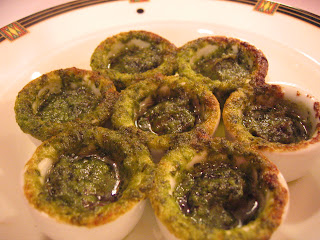.jpg)
Few minutes into the soup, the Escargots arrived without their shells bubbling in garlic parsley butter. Representing an important icon in French Bourgogne cuisine, these garden snails were cooked just right in the fragrant garlic butter sauce. Each morsel was a slithery delicateness down our throats, gone within ten seconds. Rather than pick on criticizing the snails being overflowed with the butter sauce, the excess sauce provided us with a delicious option to mop it up with the warm bread serve on the side with plain cold butter.
.jpg)
Being France, do not expect your main courses to arrive immediately when dishes from the earlier courses are cleared. Reasonably be prepared to wait 15-20 minutes for the next course as the chefs will cook your order only when its time to expedite. The dining culture in France is if you are rushed for time; just grab a baguette sandwich and go. When dining in a restaurant, customers should wait for their food and not the other way round. This is also a form of respect for the food that you are eating and appreciating the chefs’ talents in serving them to you at its best.
.jpg)
The mains finally came and I was right. The Cabillaud was very well cook with a crisp skin yet moist and juicy in the center, exhibiting the chefs skills of handling such delicately flavoured fish. Because of its freshness and perfect execution, the juicy fillet was simply brought out to its best by a good salt, quality olive oil and a squeeze of lemon. Freshly diced tomatoes provided colour and a variety of buttered vegetables from peas to broccoli and fava beans were on the side. Take note that vegetables in Europe are cooked the European way so do not expect crunchy textures like in Chinese cooking. You can in fact say that they would have been overcooked in our kind of cuisine but that's the way it is in the whole of Europe. If you want your vegetables crunchy, eat a salad. Buttery herbed steamed potatoes with creamy textures and nutty flavours provided substance to our main courses.
.jpg)
My wife’s platter of Mixed Grilled Seafood was served with the same accompaniments but with more variety of seafood to choose from. She had two great pieces of caramelized scallops, decent sized prawns, sweet tasting red mullet fillets which are prized for their taste despite its petit size and a lovely piece of black daurade fillet (sea bream), one of the best fishes from the Mediterranean Sea. Again the freshness of the seafood accentuated by good olive oil and great cooking skills made every morsel a perfect pleasure in taste. At the end of the day, it just reinforces the belief that if you have great produce with great skills, you do not really need complex sauces to pair them with.
.jpg)
We were very happy with our main courses and started to look around other tables for clues to what looks best for dessert. Classic offerings on the menu consist of Creme Brulee, Tarte Tartin, ice creams, mousse and parfaits where they are usually the norm. We choose Tarte Tartin as we didn’t want something too heavy. We ordered two Cafe Au Lait and I must say the only time I drink coffee is when I know they are served European style. I am not a fan of instant coffee and the lousy quality offered in the office pantry just reinforces it. The apple tart came only on its own with a nice buttery crust and slices of baked green apples on it. Wonderfully fragrant from the butter and a hint of cinnamon, it made our coffees tasted even lovelier. The sweet ending to this dinning experience was two complimentary pieces of dark Valhorna Chocolates to go with your coffee, something that you can only dream of in Singapore……
.jpg)
Stay tuned for the story on Bernachon.


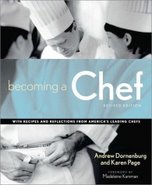
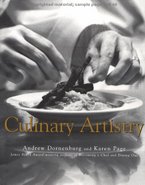


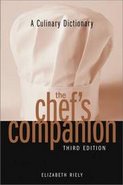


.jpg)







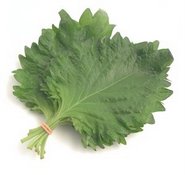




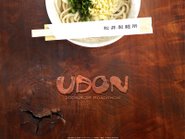





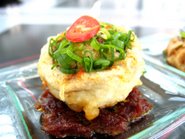


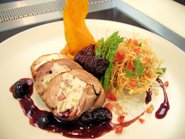
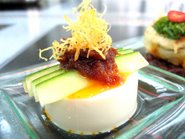
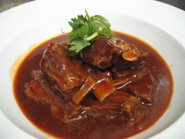
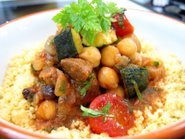


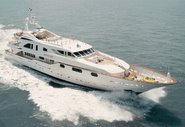





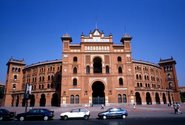







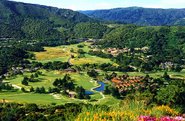





















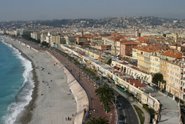
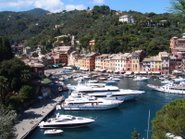
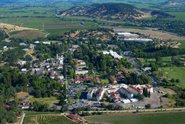
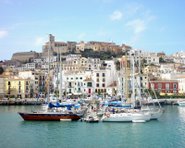
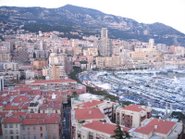


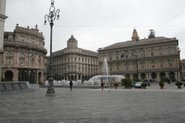




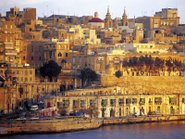



No comments:
Post a Comment